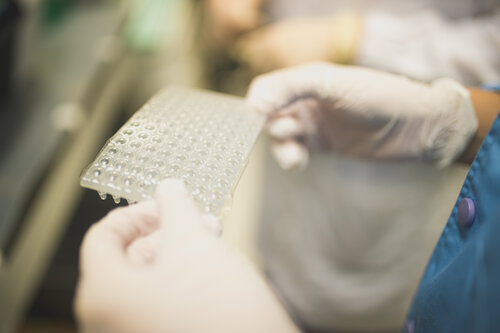Atopic Dermatitis
Atopic Dermatitis (AD) is a common inflammatory skin condition also known as eczema. Patients with AD often experience itchy skin, red and brown blotches of skin, swollen or dry patches, and anxiety due to the condition. It also makes the skin more vulnerable to environmental irritants and allergens. Treatments, including topical medications, phototherapy, immunosuppressant drugs, and steroids, are currently targeted only to relieve symptoms
Epidemiology evidence suggests that AD affects 15 to 20 percent of children and 1 to 3 percent of adults globally. In Singapore, it is estimated to affect 20 percent of children and 11 percent of adults.
Our Approach
As part of the National Atopic Dermatitis Research Programme, we aim to get deeper insights into this complex skin condition through our multidisciplinary approach.
The exact cause of AD, which belongs to a spectrum of atopic disorders, is unknown. There is a known genetic component, as it runs in families with skin conditions. Mutations in the gene Filaggrin, which encodes a protein necessary for forming the skin barrier, often result in AD.
The holistic approach to AD research in SRIS involves leading researchers, dermatologists, and industry partners to focus on the underlying causes of AD to discover effective novel therapeutics.
With comprehensive data to identify biomarkers and drug targets to treat AD, we aim to understand the skin barrier, microbiome, and host immunity interaction. Our prime focus of interest is to innovate a series of next-generation diagnostic tools and patient-specific engagement tools. Our program, encompassing clinical, genomic, and imaging data collected from patients, facilitates us to understand AD pathogenesis in Asian populations.
Burden of Atopic Dermatitis in Singapore
We aim to collect comprehensive data on the epidemiology and disease burden of AD in Singapore. This will enable us to better understand the pathogenesis of Asian AD through a systems biology approach utilising cohort-based studies. To do this, we will engage with a strong network of clinicians and scientists within Singapore and globally to ensure the regional interest and global significance of our work.

Causes of Atopic Dermatitis
We use cutting-edge technologies to investigate and characterise the pathogenic mechanisms of Asian AD. We study the skin barrier, skin microbiome, immunology, and itch to conduct in-depth clinical and experimental research on AD, with a strong emphasis on translating our results. Given our focus on Asian AD patients, we aim to develop regional significance and, therefore, appropriate pathophysiological in vitro AD models and animal models to validate and translate novel findings.

DEVELOPING NOVEL TECHNOLOGIES TO CHARACTERISE AND TREAT ATOPIC DERMATITIS
We are developing and validating diagnostic tests to identify skin genetic and functional alterations in AD. We aim to study skin barrier function and the underlying tissue as well as the cellular structure using novel in-house tools such as confocal Raman imaging of molecular components. We are also improving the utility of current imaging techniques by generating machine learning tools to detect and score AD patients.

IMPROVING EDUCATION AND MANAGEMENT OF ATOPIC DERMATITIS
We aim to translate novel findings and technologies identified within the themes for the benefit of our patients. Strategies will include the development of new drug targets for clinical trials in AD patients. We aim to create novel methods to engage patients in their therapy and disease management through digital technologies. Mobile applications will be co-developed with clinical trials and will improve compliance and patient self-care and remotely monitor patients.

Contact Us
For more information on the National Atopic Dermatitis Programme, please contact Steven Thng or John Common.
A*STAR celebrates International Women's Day

From groundbreaking discoveries to cutting-edge research, our researchers are empowering the next generation of female science, technology, engineering and mathematics (STEM) leaders.
Get inspired by our #WomeninSTEM
